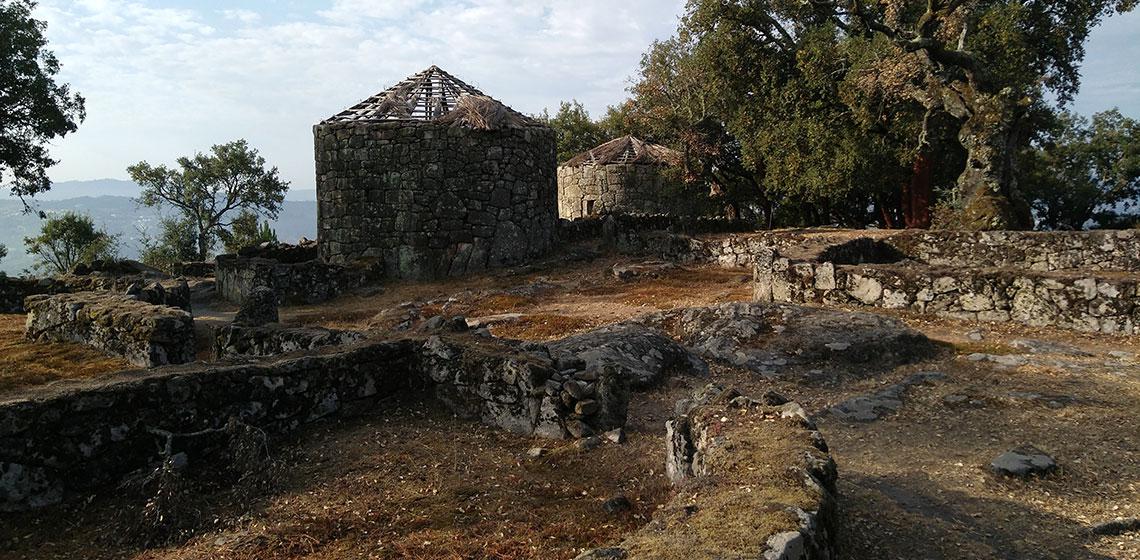
The fortified site was occupied probably from the Bronze Age, but the most extensive settlement was used from the second century BC to the first centuries AD. Later on, in the early Middle Ages, a little church was built in the acropolis.
Citânia de Briteiros is one of the most expressive proto-historical fortified towns in the Iberian Peninsula, both for its magnitude, and the monumentality of its ramparts, urbanism and architecture. On the other hand, it is also one of the paradigmatic sites of the History of the Portuguese and Peninsular Archaeology. In 1875, archaeologist Martins Sarmento excavated part of a hill fort in northwest Portugal, the Citânia de Briteiros at Guimarães. Shortly after the excavations, he (re)constructed two stone roundhouses on their original foundations (Ayán Vila 2001); this was the first - and for a long time the only - archaeological in situ (re)construction in Portugal. The houses were constructed just before a site visit of the participants of the IX International Conference of Prehistoric Anthropology and Archaeology, and sparked off great interest in the Castreña Culture. Sarmento realised himself that having the height of the houses equalling the diameter must be wrong and, probably, the two structures should be interpreted as a house with a patio, and not as two separate houses.
Many thanks to the Martins Sarmento Society for extensive information.
AYÁN VILA, J.M., 2001. Citânia de Briteiros (Guimarães), in J.M. Ayán Villa (ed.), Arqueotectura 2: La vivienda Castreña. Propuesta de Reconstrucción en el Castro de Elviña, Traballos en Arqueoloxía da Paisaxe (TAPA) 23, Santiago de Compostela: Laboratorio de Arqueoloxía e Formas Culturais, IIT, Universidade de Santiago de Compostela, 65-66.
